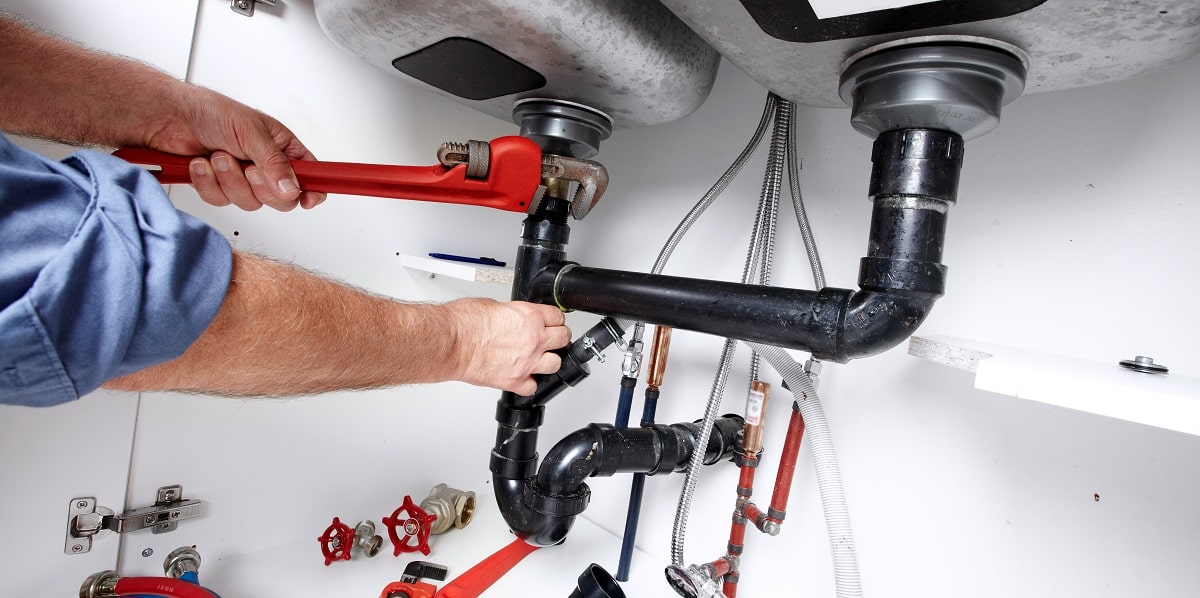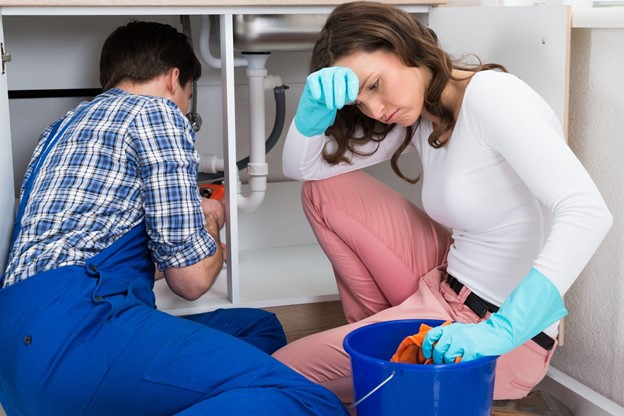Here underneath you'll find more dependable expertise around Plumbing Issues in Older Properties and How to Fix Them.

Older homes commonly come with beauty, personality, and history, however they can also bring a host of pipes issues. Whether you're taking care of aging pipelines, low water stress, or leaks, understanding exactly how to deal with these usual issues is essential to keeping a risk-free and functional home. In this overview, we'll explore the regular plumbing obstacles faced by older homes and supply practical solutions to keep your pipes in top form.
Understanding Typical Pipes Problems
Aging Pipelines
One of one of the most usual problems in older homes is maturing pipelines. Relying on the age in which your home was constructed, the pipelines might be made from products that have actually weakened with time, such as galvanized steel, cast iron, and even lead. These products can wear away, become breakable, or create leaks, bring about water damage and prospective carcinogen.
Low Tide Pressure
If you're experiencing low water pressure, maybe due to natural resources, deterioration inside the pipes, or old fixtures that are no longer working efficiently. This can be a major trouble, specifically in locations like showers and sinks.
Leaking Pipes
Leaks are an additional frequent issue in older homes, typically brought on by rusty or damaged pipelines. Even tiny leakages can lead to considerable water damage, mold and mildew development, and increased water bills if not dealt with immediately.
Obsolete Components
Obsolete plumbing fixtures such as taps, toilets, and showerheads not only look old but may additionally be much less efficient, susceptible to leakages, or inappropriate with modern pipes criteria.
Pipe Deterioration
Deterioration is an usual issue in older pipes, particularly those made from galvanized steel or actors iron. Rusty pipelines can limit water circulation, trigger discoloration, and ultimately result in leakages or pipe bursts.
Assessing the Condition of Your Pipes
Evaluating Noticeable Pipelines
Beginning by checking any noticeable pipelines in your home, such as those in cellars, crawl spaces, or under sinks. Search for signs of deterioration, leaks, or rust, which can suggest underlying problems.
Looking for Leaks
Look for leaks by inspecting locations around faucets, toilets, and under sinks. You can likewise check your water meter before and after a period of no water make use of to find concealed leaks.
Water Top Quality Screening
Older pipelines can impact the quality of your water. Conduct a water top quality examination to check for pollutants such as lead, corrosion, or other contaminations that may be presented by aging pipelines.
Solutions for Typical Pipes Issues
Changing Aging Pipes
If your home has old, degrading pipes, take into consideration replacing them with modern materials like copper or PEX. This can be a substantial investment, but it will certainly avoid future concerns and enhance the security and reliability of your plumbing system.
Dealing With Low Water Stress
To fix low water pressure, start by cleaning or changing old fixtures and getting rid of mineral accumulation in the pipes. If the trouble lingers, it might be required to change sections of rusty pipes.
Fixing and Replacing Dripping Pipes
For little leakages, you can utilize pipe clamps or epoxy putty as a momentary fix. Nevertheless, it's best to change dripping pipes completely to stay clear of further damages.
Updating Fixtures
Updating old components to contemporary, water-efficient models can enhance your home's pipes performance and decrease water intake. Search for components with the WaterSense label for the best performance.
Handling Pipeline Deterioration
If your pipes are worn away, replacing them with corrosion-resistant materials like copper, PVC, or PEX is the most effective solution. Routine examinations and water quality upkeep can aid prevent additionally deterioration.
When to Call a Professional
While some plumbing problems can be handled with DIY options, there are times when it's finest to call a specialist. If you're dealing with significant leaks, substantial deterioration, or are unclear about the condition of your pipes, an accredited plumber can offer skilled analysis and fixing.
Preventive Upkeep Tips
Regular Inspections
On a regular basis evaluate your pipes system for indicators of damage. Capturing concerns early can protect against costly repair work down the line.
Water Pressure Policy
Ensure your water pressure is within the recommended range to prevent worrying your pipes and fixtures. A plumbing technician can set up a pressure regulator if needed.
Water High Quality Maintenance
Install water filters or softeners if your water top quality is poor. This can shield your pipelines and components from damages triggered by difficult water or contaminants.
Proactive Pipeline Substitute
If your home has older pipelines, take into consideration proactive replacement before significant concerns develop. This can conserve you from emergency fixings and water damages.
Final thought
Handling pipes concerns in older homes needs a mix of caution, precautionary maintenance, and prompt upgrades. By comprehending the common challenges and knowing when to look for expert help, you can guarantee your plumbing system remains useful and reliable for several years to find.
Common Plumbing Issues in Older Homes and How to Fix Them
Owning an older home in Australia comes with its unique charm and a set of challenges, especially when it comes to plumbing. The Sunshine Coast has many older properties that can harbour plumbing problems that aren t just inconvenient but potentially costly. Here s a look at some common plumbing issues in older homes and expert advice on how to handle them.
Outdated Piping Materials
Many older homes were built with galvanised steel, cast iron, or even lead pipes, materials that are far from ideal by today s standards. Galvanised pipes are prone to corrosion and clogging, while lead pipes pose serious health risks.
How to Fix:
Replacing old pipes is a job for a professional. Upgrading to copper or PVC piping not only enhances water quality and flow but also increases the property s safety and value. If you suspect your home has outdated materials, a licensed plumber can conduct a thorough inspection and recommend the best course of action.
Corrosion and Pipe Degradation
Over time, exposure to water and minerals can cause pipes to corrode, leading to leaks, bursts, and water contamination. Corrosion is especially common in homes over 50 years old.
How to Fix:
Regular inspections can catch early signs of corrosion. If corrosion is found, the affected section of piping often needs to be replaced. For homes with extensive corrosion, a complete plumbing overhaul might be necessary. It s crucial to consult with a plumbing expert to understand the extent of the issue.
Tree Root Intrusion
Older neighbourhoods usually have mature trees whose roots can intrude into pipe lines, causing blockages or damage. This is particularly problematic for sewer lines, where roots seek out water sources.
How to Fix:
A plumber can use a specialised camera to inspect sewer lines for root intrusion. If roots are a problem, methods like root cutting or hydro-jetting can clear the obstruction. In severe cases, part of the pipe may need replacing. Consider root barriers around the piping to prevent future issues.
Inadequate Water Pressure
Low water pressure in older homes can be due to various factors, including corroded water lines, sediment build-up in pipes, or outdated fixtures.
How to Fix:
First, check if the low pressure is isolated to one area or throughout the house. Replacing old fixtures can sometimes resolve the issue. However, if the problem is more widespread, it might be due to sediment or corrosion. Flushing the system or replacing the affected pipes usually restores normal pressure. Again, a professional assessment is advisable.
Outdated Fixtures
Older homes often feature fixtures that are not only visually dated but functionally inefficient. This includes everything from toilets and taps to showerheads and washing machine hoses.
How to Fix:
Updating these fixtures can improve both water efficiency and the aesthetic appeal of your home. Modern fixtures are designed to conserve water, which can significantly reduce your water bill and lessen your environmental impact.
Conclusion
Maintaining the plumbing in an older home requires a proactive approach. Regular checks and updates are key to preserving these beautiful properties. If you re facing plumbing issues in your older home, it s best to call on experienced professionals like Green & Gold Plumbing & Gas. With the right expertise, even the most daunting plumbing problems can be resolved, ensuring that your home s character is maintained while its functionality is enhanced.
https://gandgplumbing.com.au/common-plumbing-issues-in-older-homes-and-how-to-fix-them/

I stumbled upon that post on Main Plumbing Issues Found in Old Houses when doing a lookup on the internet. If you appreciated our blog post plz don't forget to pass it around. We take joy in your readership.
Click Here